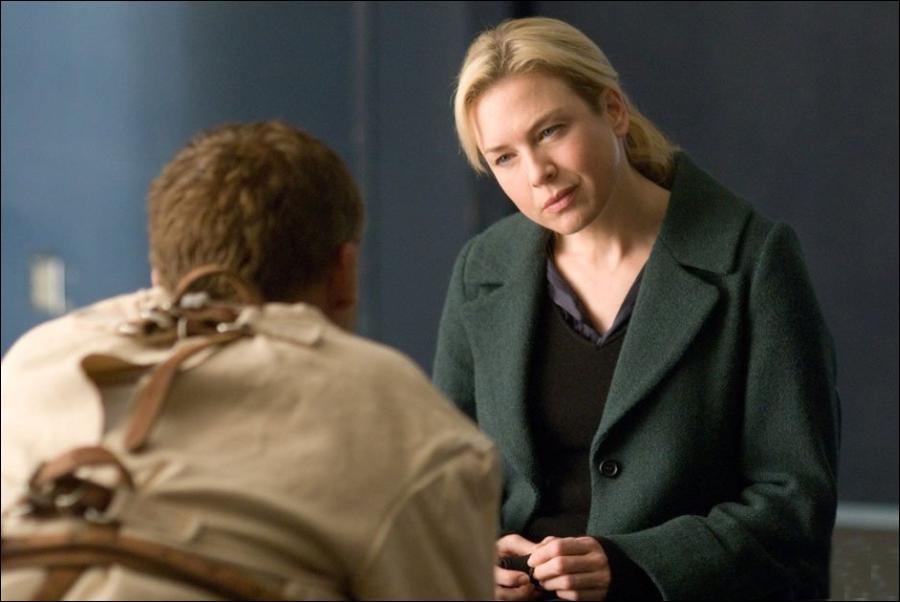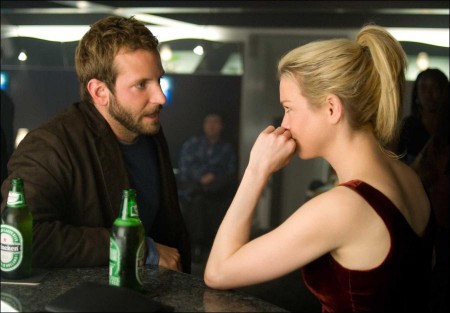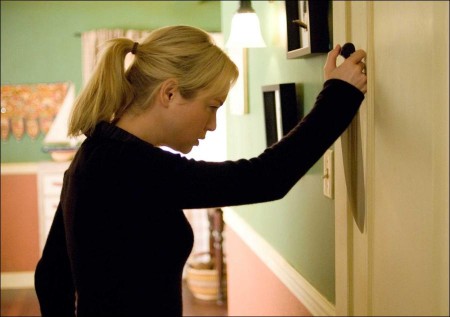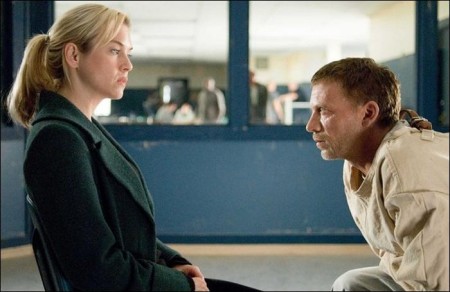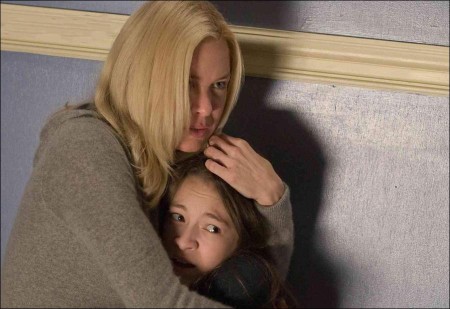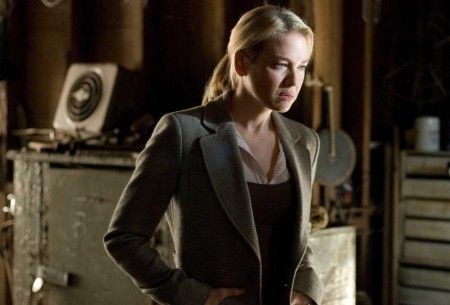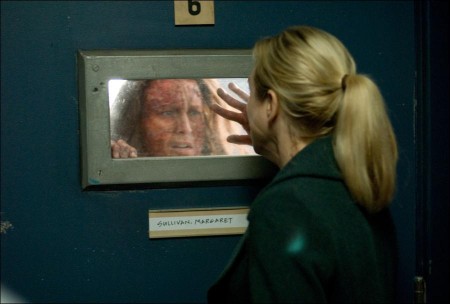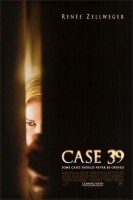About the Production
“What scares you?”
From The Omen to The Exorcist, from Rosemary’s Baby to The Demon Seed, from The Others to The Orphanage, terror is often illustrated around families. Many of cinema’s most memorable horror stories have emerged from the tiny cracks in family relationships and the volatile emotions of anxiety, paranoia and uncertainty that hide within. Now comes a chilling story in which a woman, whose job is to save broken families, taking a leap to foster a young girl in desperate need. But Emily Jenkins is about to discover that becoming a parent overnight isn’t so easy. It’s a job that dredges up her deepest fears – fear of failure, fear of not understanding, and fear of completely losing control.
Those fears are unnerving enough, but there is another kind of fear that Emily’s foster child Lillith unleashes into her life and the lives of those around her – a fear found only in the deepest, darkest, most forbidden corners of the subconscious imagination. It’s a fear so tenacious in its grip, it can be fatal.
Academy Award winner Renee Zellweger takes on her first horror-thriller role with CASE 39, which also marks the American feature debut of gifted German director Christian Alvart. Alvart recently came to the fore in Europe with the innovative psychological thriller Antibodies, the riveting tale of a serial killer whose malevolent state of mind just might be virally contagious to the police officer questioning him. Celebrated as engrossingly stylish and provocative, the film thrust Alvart into the limelight of today’s fastest rising new filmmakers.
Alvart was planning to make a radical departure from horror-thrillers for his next film, but something changed his mind. Producer Kevin Misher (Public Enemies) sent him screenwriter Ray Wright’s edge-of-your-seat screenplay for CASE 39, and he was hooked.
“At the time, I was ready to break out of this corner of doing horror movies, but when I read CASE 39, it was so much fun, I just had to do it,” explains Alvart. “It was such a great read. I went through the script in less time than the movie itself lasts. Some of the scenes that Ray wrote were so shocking; I loved that they succeeded in being surprising in new ways. He managed to take you completely out of your comfort zone, and that kind of extreme tension interests me.”
“I’m only interested in horror movies when they are about real fears that we all share, and I especially liked that CASE 39 reflects the realities and emotions that surround dysfunctional families,” Alvart says. “For me, the story is, at heart, about being a parent and how you can’t really control the minds of your children. You can try, you can do your best, but you don’t ever have total control. And what happens when someone like Emily does all the right things, but it simply doesn’t work? What happens when someone does bad things despite all the attempts to guide them?”
Those questions compelled Alvart to take a visceral approach that emphasizes realism – until a series of events crosses the line into a harrowing supernatural zone. “I always wanted the film to have a very real, gritty feeling,” he explains.
To Alvart, realism didn’t mean leaving his signature style behind. He uses intricately-constructed visual rhythms to build mystery and suspense layer by layer – to bone-chilling effect. “I like to have everything very tightly controlled in this kind of movie, so that every physical element – every prop, every color, every movement of the actors – work together to create a reality for the audience, a heightened reality that pulls them into places they didn’t know they would go.”
This approach galvanized producers Steve Golin and Kevin Misher. “Christian had a terrific sense of the material,” says Misher. “When Steve Golin, Renee Zellweger and I first met with him, we all loved him. We loved his energy, his focus and his point of view. He had never made a film in English before, but his previous film Antibodies spoke volumes about his talent. He has a voracious appetite for suspense. And Christian came into the room already knowing exactly what he wanted right down to the camera angles.”
With things moving ahead quickly, Alvart set about storyboarding every frame of the film, ultimately creating detailed frames of every second of the film as it existed in his mind. He knew that several of the film’s most shocking scenes, such as the suspenseful oven sequence that kicks off Emily’s relationship with Lillith, and the unforgettable bathroom scene in which hornets swarm Emily’s psychologist friend Doug, would have to be carefully balanced. “We wanted these scenes to be very scary and disturbing, yet without going too far,” he says. “To go to the line, but stay within the confines of a psychological thriller.”
When casting, Alvart looked for actors who had chemistry between them that would create mystery, emotion, and anxiety. “For the supernatural elements of CASE 39 to work, you really need to believe in these characters,” he explains. “I needed actors who could make these strange events feel emotionally quite believable, and who could connect on a deeper level with the audience. And that’s exactly what Renee Zellwegger, Jodelle Ferland, Ian McShane and the rest of the cast were able to do.”
The Caseworker
Renee Zellweger is Emily Jenkins
CASE 39 is anchored by a bold performance from one of America’s leading screen actresses: Renee Zellweger, the Academy Award-winning actress whose work has ranged from the sweeping historic drama of Cold Mountain to the feisty fun of female prisoner Roxy Hart in Chicago to the iconic title role of the Bridget Jones series of hit comedies. Here, Zellweger dips into a raw portrait of a new foster mother driven to desperation as the little girl she thought she rescued brings mystery, fear, and chaos into her life.
From the beginning, Alvart fought to cast a strong and serious actress in the role of Emily, knowing it would take both considerable skill and courage to make her situation believable. “I knew that the overall tone of this movie would really change depending on who the actress was,” he explains. “So, I didn’t want just the latest `it girl,’ but an actress with real strength and maturity.”
Still, as a director who had never made a film in America before, he could not have expected to land one of Hollywood’s most popular, versatile and award-winning actresses.
When Renee Zellweger became attached to the project, Alvart was in heaven. “Her performance absolutely grounds the movie,” he says. “There’s so much gravitas and emotion to her portrait of Emily. It’s not just about being scared and running from fear, she also adds layers to who Emily is and what drives her. And as talented an actress as she is, she also was willing to do very primal things like run around barefoot in the rain for two days.”
Everyone involved in the project was excited to see Zellweger tackle the one cinematic genre in which the international star has yet to be seen. Comments Kevin Misher: “Renee is obviously a multi-award-winning actress, but I think her vulnerability works especially well for this genre. You’ve never seen her play a role like this. And it’s also a bit of a head-fake, because at first you think you’re watching a more conventional thriller and, before you know it, you’re inside a supernatural story that has a lot of shocks and fun to it.”
Zellweger was won over by the psychological sophistication of Ray Wright’s screenplay. “I stayed up all night finishing that script because I couldn’t put it down,” she says. “It was so cleverly written, and what I really loved was that it was rich with subtext. It’s not just about a woman going through something eerie; it’s about a woman’s psychological deterioration. That’s also what makes it so much more frightening. It walks that fine line where you question if what is happening is real or if Emily is losing her mind. It’s a wonderful line to walk as an actress.”
The complex psychological makeup of Emily Jenkins intrigued Zellweger, who was drawn to her mix of moral decency and underlying emotional wounds from the past. “Emily is a very responsible, loving, charitable person who gets real joy out of helping these kids,” the actress says. “That’s why it’s so devastating to her when things with Lillith get more and more difficult. She starts to wonder if she’s simply not equipped to be a mother, or if something far more unusual is going on. It brings out all her fears – of failing, of abandonment, of interfering in a situation where she shouldn’t have – in a very significant way. It takes her to a dark, dark place in her psyche, and that’s what I loved so much about the film. It has one foot in stark reality and the other somewhere inexplicable.”
To gain a more intimate understanding of what real urban social workers deal with on a daily basis, Zellweger spent time at Los Angeles Child Protection Services, making the rounds with visits to troubled families. “I found it to be a very interesting job because it’s very much about understanding human nature, about seeing things that aren’t necessarily on the surface, about intuition. It’s also a huge responsibility,” observes Zellweger.
That sense of responsibility becomes personal for Emily when she tackles Case 39, the case of the Sullivan family and their somber, reserved daughter Lillith, whose sadness echoes that of Emily’s past. The more Emily tries to love and be there for Lillith, the more disaster and destruction invade her previously controlled life.
Zellweger was heartened by Christian Alvart’s approach to this place where gritty domestic problems, authentic fear, and wild supernatural events collide. She notes that this helped her to dive fearlessly into the film’s extensive physical action. “From the first day on the set, as I became more familiar with Christian’s work, with his techniques, with his visual style, and his ability to do things so precisely, I felt that this was a major filmmaker in the beginning of his career,” Zellweger said. “I can’t wait to see where he goes next. His enthusiasm for filmmaking is contagious.”
The Foster Child
Jodelle Ferland is Lillith Sullivan
On the surface, Emily Jenkins’ new foster child is an innocent 10-year-old victim of unspeakable family abuse. The pretty, quiet Lillith is a lonely, haunted child in desperate need of real family love and devoted care. But her appearance doesn’t tell the whole story, and there is far more to this child than first meets the eye. Lillith joins the pantheon of eerie child characters from such films as The Bad Seed, The Omen, The Shining and Joshua.
When casting Lillith, the filmmakers knew they needed a young actress who possessed unusual depth and skill. They needed someone who could portray a young girl capable of invoking both empathy and abject horror, an actor who could represent the dichotomy of childhood purity and unbridled evil. They looked for an actress who would be so believable in the role that she would shock audiences with her transformation between innocence and demonic fury. An extensive search led them to Jodelle Ferland, whose impressive resume includes the lead role in Terry Gilliam’s Tideland, as well as the hit horror film Silent Hill. An actress for as long as she can remember, Ferland won her first Emmy at the astonishing age of four.
“I don’t know how many thousands of kids we looked at, but when we boiled it down, Jodelle was the perfect choice,” says Alvart. “It wasn’t about her look or about her being creepy; what really drew us in was that she is simply a very powerful actress,” he says. “For me, that was the most important thing, because Lillith is a complicated character. Jodelle turned out to be so mature that there was very little difference between directing her and directing Renee. I never had to talk to her like she was a child. She was as present as any talented actress twice her age.”
Alvart continues: “In a lot of movies that have scary kids, the kids just sort of pop up now and then, but they’re really not part of the story. In CASE 39, Jodelle is really the main character after Renee. We used very little CGI with her, and we didn’t have to because her acting alone is so scary.”
Renee Zellweger was equally blown away by her young co-star. “There’s really nothing that is 12 years old about Jodelle,” she laughs. “She’s a beautiful soul, a beautiful person and, at the same time, she was able to really scare me. If she wants to charm you, no problem. If she needs to frighten you, she can. She is so bright and perceptive; she was able to do amazing things with Lillith.”
“I like doing scary movies,” Ferland admits. “It’s interesting to be a cute little girl and then suddenly become creepy, because that makes things even more scary. Lily is in some ways just an innocent little girl, but she can’t help but bring evil with her. The more people get to know her, the more weird things happen – very, very weird things.
The thing that most thrilled Ferland about CASE 39 was the opportunity to work so closely with Oscar-winner Renee Zellweger. “I really loved the Bridget Jones movies and I was just so excited to be able to work with her,” she says. “She made it a lot of fun.”
Ferland always makes sure to have fun, no matter how dark the role she takes on. As disturbing as it was to the adult crew watching, Ferland notes that during the scene in which she is stuffed into an oven, she was actually enjoying herself. “I kind of liked being in there,” she confesses. “The bottom of the oven they built was rubber, so even though I was screaming and banging, it was kind of fun.”
Ferland’s ability to enjoy her work while bringing such an incredible intensity to it was an ongoing inspiration to cast and crew. “Christian had a real instinct about Jodelle right at the beginning,” says Kevin Misher. “He knew that she could have that sweetness and at the same time scare the bejeezus out of you. And she was absolutely able to do both.”
Best known for his Golden Globe-winning role as the villainous Al Swearengen on HBO’s Deadwood, Ian McShane plays a completely different character in CASE 39. He portrays a rough-edged cop with a soft spot for Emily Jenkins and the troubled children she tries to save. McShane might have been celebrated by People Magazine as “TV’s sexiest villain,” but Christian Alvart’s instincts suggested he would be right for the role of Detective Mike Barron, a good cop trying to rationalize some very sinister and inexplicable crimes.
“Ian McShane was the first person who popped into my mind for the role of the detective,” Alvart says. “I think because he’s such a grounded actor who can make the most ridiculous things sound completely real, and that’s exactly what you need in a horror film.”
Renee Zellweger was pleased to work with McShane for the first time. “People who know him from Deadwood kept asking me, `Is he lewd, is he crude?’ But he was wonderful. He’s hilarious, and he kept the energy on the set very light,” she says. “You can see how Detective Barron and Emily share this mutual understanding that the system sometimes fails children, and he can be moved to take matters into his own hands.”
McShane was drawn to the screenplay but notes: “What really drew me was seeing Christian’s movie Antibodies, which I thought was terrific. For this kind of horror story, you need somebody who really knows how to do that kind of thing, and Mr. Alvart knows how – without a doubt.” McShane adds: “It’s also a nice change to play a good guy. This is a very different role from any that I’ve done.”
Although Barron is a cop, McShane compares him to a common character in many classic horror films. “If you think in terms of films like The Bad Seed and The Exorcist, my character is sort of like the priest. He’s a good and moral man who’s trying to help Emily probe the psychological reasons for what is happening to her,” he explains. “He’s a 25-year veteran cop who has always helped Emily try to protect children. And with Lillith, he tries to stick to the standard rules, but everything swings around on him.”
It is Barron who first identifies that Lillith might be a more troubled child than she seems on the surface, believing she lied about late-night phone calls that compelled one of Emily’s clients to do something shocking. “For most of the movie, Barron still thinks she’s just a kid lying and fibbing,” explains McShane. “He doesn’t believe there’s any more to it than that, until more evil events start happening and it might be too late.”
McShane says he was thrilled to be surrounded by the talent of Renee Zellweger, Jodelle Ferland and especially Christian Alvart. “Christian has an incredible love for and knowledge of movies, so he’s able to take elements from all these classic psychological thrillers and put his own twist on it. He storyboarded the entire movie and was using all kinds of interesting tricks, so I think for all of us, a big part of the fun was being part of his creative process.”
While Ian McShane’s detective has a paternal relationship with Emily, the man who would be her boyfriend, that is, if she allowed herself time to date, is child psychologist Doug Ames. Taking the role is Bradley Cooper, whose best-known roles include television’s hit shows Alias and Nip / Tuck, the Vince Vaughn / Owen Wilson comedy feature Wedding Crashers, He’s Just Not That Into You and most recently The Hangover.
From the beginning, Alvart was looking for an actor who would provide a natural contrast with Zellweger’s intensity. “I was looking for somebody who’s very light and funny,” he says. “I even looked at some stand-up comedians, but what I liked about Bradley is that he had done both comedies and more serious roles. He also had a great, flirty chemistry with Renee.”
Cooper admits that the chance to face a man’s most gripping psychological fear come to life was as irresistible as the screenplay. “I always felt that CASE 39 wasn’t just a horror film, but a great story. I always think it’s most frightening when reality is affected by fantasy, and that is a big part of this movie,” he says. “It’s not horrifically gory, but there is a lot of suspense. And, the chance to do a movie with Renee Zellweger and Christian Alvart, who I think is an auteur, was huge,” says Cooper. “And Jodelle is fantastic, so I knew I better show up with my `A’ game.”
For Cooper, everything would come to a head on the day he had to show up on set and face a literal hornet’s nest – the result of Doug’s most mortifying inner fear brought to life. The scene was shot over two intense days. “Bradley was very game to do the scene,” comments Alvart. “He was really thrashing around in the bathroom, tearing the whole place apart. It was pretty impressive.”
“I could definitely empathize with Doug’s fear of flying insects,” laughs Cooper. “But the most interesting part of shooting that scene is that Doug is completely losing his mind, which is a very dangerous and exciting thing to play. It was definitely one of the most challenging things I’ve done, and I knew I’d have to throw myself into it.
“There was no way to fake it, so I had to really believe what was happening,” he notes. “There were some live hornets we used and there were lots of dead hornets. I actually had dead hornets coming out of my ears! It was intense, but it was also quite fun to be part of what is the first great watershed moment of the movie.”
The Family
Kerry O’Malley and Callum Keith Rennie are Margaret and Edward Sullivan
Among CASE 39’s most mysterious characters are Lillith’s parents, the exhausted, angry, seemingly haunted Sullivans who commit a terrible crime against their young daughter. Are Margaret and Ed Sullivan as insane as they seem, or is there, as they insist, more to their story?
To bring these tricky characters to life, Christian Alvart turned to two acclaimed actors: Kerry O’Malley, best known as an accomplished Broadway stage actress and for her role in Showtime’s Brotherhood; and award-winning Canadian star Callum Keith Rennie, who has worked with iconoclastic directors Christopher Nolan (Memento) and David Cronenberg (Existenz).
As Margaret, Kerry O’Malley had to dive into an abyss of emotion. Renee Zellweger was particularly impressed with how willing she was to go for it. “When you see Kerry in the asylum where she’s eventually committed, it’s amazing the places she goes to as an actress,” says Zellweger. “We were unbelievably lucky to get both Kerry and Callum Keith, who is equally fantastic.”
Margaret’s greatest fear is fire – the fires of hell and the oven fire with which she tried to do away with Lillith – which is what she winds up experiencing every day in her scorched imagination at the mental institution. O’Malley found her battle with inner demons intriguing. “The interesting part for me is that Margaret was once a kind, generous, loving person who wanted to help people, but when Lillith arrived in their lives, she was severely tested and became deeply conflicted,” she explains. “She and her husband were surrounded by terror, and that changed them.”
O’Malley went so deep into the role that, at times, she even scared the crew. “A lot of the stuff I had to do was really dark and disturbing, and my skin was done in such a way that it looked like I was decaying,” she recalls. “People on set avoided me. It’s scary to watch a woman scream bloody murder and act as if she’s on fire all the time, so I’d walk down the hall and people would avoid my gaze. It was all very challenging. But then one day I came to the set as myself and everybody started talking to me again.”
When it came to the harrowing scene where Margaret and Edward attempt to murder their daughter in a grisly fashion, O’Malley credits Jodelle Ferland for making it bearable. “It wouldn’t have been possible to do those things with a child who wasn’t as cool and clear-headed and professional as Jodelle,” she says. “She was a real trouper. She understood that it was meant to be scary, but also that it was just pretend, and that it’s what we do to tell stories.”
O’Malley had to endure up to six hours a day in makeup, having extensive facial scars and prosthetics applied to her body so that she would appear as the burn victim Margaret believes she is in her mind. “That’s really frightening stuff, because you look in the mirror and it looks so painful,” she notes. “They even had prosthetic scratch marks where Margaret was tearing up her arms because she feels like she’s on fire. It was very intense.”
Perhaps most intense of all, O’Malley got to experience the sensation of being lit on fire. “It’s tough to act while you’re on fire,” she confesses, “because you’re thinking things like, `Don’t let me set my hair on fire, don’t let me set my face on fire, don’t let me set the cameraman on fire!’ And at the same time you’re trying to do the scene. It was a little crazy, but it was also a cool experience. And I was very happy with it when it was over!”
The Design of Case 39
Walls That Tilt, Ceilings That Sink, Colors That Reveal.
For Christian Alvart, fear begins in psychology and emotion, and he uses every element of a film’s design to heighten the feeling that the world is tilting out of control. By manipulating the sets to create visual illusions and using a symbolic palette, Alvart uses a combination of old and new tricks to keep audiences on edge throughout CASE 39.
Alvart turned to a cinematographer he knew could provide stunning visuals: Hagen Bogdanski, cinematographer of the Academy Award-winning thriller The Lives of Others, about life under the East German Stasi. Alvart and Bogdanski previously worked together on Antibodies. “We have a very complicated, deep relationship,” says Alvart. “But I was very impressed with what he did on this film. He was breaking every record in terms of moving so fast, yet he still conveyed the style we needed. I don’t think any other DP could have done this particular movie in this style with me in the amount of time Hagen did. I think he will now make many more movies in Hollywood; his dream is to shoot a James Bond movie.”
Alvart and Bogdanksi played freely with the camerawork, using overhead crane shots to constantly increase the sense of tension, and physical in-camera effects to keep things unpredictable for audiences used to the less-subtle CGI. “I love those old-fashioned camera tricks, even from the ’20s and ’30s,” muses Alvart, “Tricks like filming stuff backwards, or at a different speed, or opening up the lens or shaking the image. It’s stuff that can look great and have a strong impact. We also used a lot of forced perspective instead of CGI for that reason.”
Adds Kevin Misher: “In CASE 39, the camera is used in a way that keeps the audience unsettled and uncertain, with the ultimate effect being a very scary, but enjoyable experience that comes at you in ways you’re not expecting.”
The unexpected was also key to the work of production designer John Willett, who designed the frosty sets for the arctic adventure Eight Below. This was Willett’s and Alvart’s first time working together, and Alvart was impressed with Willett’s willingness to explore creative boundaries. “From the minute we started working together, John’s mind was racing and he started bringing me color schemes and models and drawings,” recalls the director. “I knew it was going to be a very fruitful, creative relationship. He always exceeded my expectations.”
For Willett, the job couldn’t have been more thrilling. “I’ve done several horror movies, but for the most part, they’re pretty heavy-handed. What I loved about CASE 39 was that it read more like Rosemary’s Baby, where the terror builds up slowly from a place of bland safety, to a tumult of fear. This sort of thing is all about clever writing, and then later on, performances and direction,” he says. “I take the very strong outline of what is written, and just try to colour it in. This script was so frightening, that some of the people in the art department could only read it during daylight hours! “
Willett’s tour-de-force was Emily’s house, which he designed not only to reflect her taste and personality, but with some very unique and surprising characteristics. To intensify the emotional and psychological changes that come with the arrival of Lillith, the designer created hallway walls that could tilt at his command, and an office ceiling that could be progressively lowered, creating a disorienting feeling without the use of CGI.
These tweaks to the structure of Emily’s house were so subtle, even Renee Zellweger didn’t know about them until the day the walls began moving. Willett felt that from the production design standpoint, the temptation to do something rather different was irresistible, and Christian and the producers were all for it. The result was a reasonably thorough manipulation of the world that the central character inhabits. “We designed walls that could tilt, and entire ceilings that could slowly lower as Emily’s world closed in around her,” he says, “It gives you the sense that reality is slightly warped – something has changed, but you can’t quite put your finger on it. It throws your perspective off.”
Similarly, in Emily’s office, the massive ceiling is 12 feet at first, then eight then seven, as if her entire world is slowly being crushed.
Willett wound up designing even many of the film’s more simple interior locations as set so he could have maximum control over the physical environment. This was especially true for the bathroom in which Bradley Cooper’s Doug is swarmed by an army of hornets. “We decided every element had to be designed by us in that bathroom in order to get exactly what we wanted visually,” he explains.
Although Alvart is not averse to CGI, he pushed his team to use as many real physical effects as possible. For the scene in which Emily and Lilllith plummet at high speed in a skyscraper elevator, Alvart had the designers build a mini elevator-shaft that could fall down about 4 ½ feet, simulating the stomach-churning motion for Renee Zellweger and Jodelle Ferland. “I think it was a very big adrenaline rush for Renee,” Alvart says.
Of course, they played a lot with the color as well. “Throughout the film, color is associated with certain people and feelings. For example, Lillith’s room and almost everything to do with her is a very cold blue. Any time you see that color, you know that Lillith is nearby. In the same way, Emily is usually seen surrounded by warmer colors, greens and browns and those sorts of good, safe colors. Anytime insanity and fear come into the situation, we used a lot of off-white.”
“Most of all,” says Willett, “the aim was to integrate the sets with the performances and the story line so they all become one conduit to an onrushing sensation of fear. What was exciting was seeing how the design all worked together with the actors,” he says. “It really began to bring to life all the feelings that were present when I first read the script.”
That same sense of rich detail provided continuity through all the elements of production, including wardrobe, makeup and visual effects. Monique Prudhomme’s (Juno) contemporary wardrobe echoed the same carefully-constructed palette as John Willett’s designs. The special-effects makeup of Julie Beaton and Harlow MacFarlane included adding faint blue veins to Jodelle Ferland’s face to make her more frightening, and Chris Watts’ (300) visual effects supervision provided judicious use of CGI to add hellish dimension to Emily’s environment.
From the design of the film to the performances, the emphasis was always on layering an internal, imagined sense of fear that slowly becomes more and more real. “What’s great is that when you start watching CASE 39, you feel like you’re in a Sidney Lumet movie,” says Misher. “You’re in this very gritty world of social workers and troubled children, and then slowly, the layers of the onion are peeled away and you realize you’re in a supernatural world that doesn’t play by the rules.”
Production notes provided by Paramount Pictures.
Case 39
Starring: Renée Zellweger, Jodelle Ferland, Ian McShane, Bradley Cooper, Kallum Keith Rennie, Kerry O’Malley
Directed by: Christian Alvart
Screenplay by: Ray Wright
Release Date: November, 2009
MPAA Rating: R for violence and terror, including disturbing images.
Studio: Paramount Pictures
Box Office Totals
Domestic: $13,248,477 (100.0%)
Foreign: —
Total: $13,248,477 (Worldwide)
